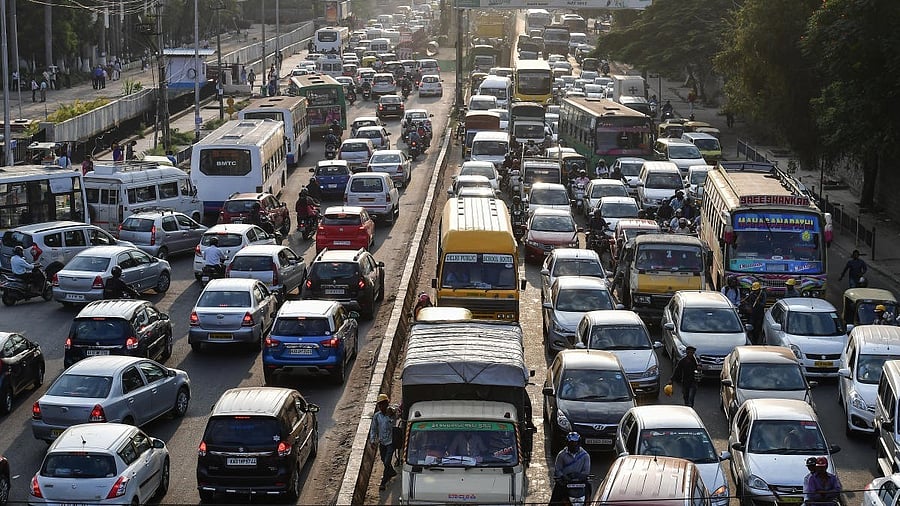
A busy road in Bengaluru.
Credit: DH Photo
New Delhi: Bengaluru is among the world’s top-ten most densely populated cities, according to a new UN report that says India houses five of the 33 megacities of the world as against China’s four.
Out of the world's 50 most densely populated cities, as many as 12 are in India with Mumbai topping the list with a population density of nearly 30,000 per sq km. Four Indian cities - Mumbai, Surat, Ahmedabad and Bengaluru, which has a population density of over 20,000 per sq km - are among the top ten.
The report released by the UN Department of Economic and Social Affairs says the world is becoming increasingly urban, with cities now home to 45 per cent of the global population of 8.2 billion.
Looking ahead through 2050, two-thirds of global population growth is projected to occur in cities, and most of the remaining one-third in towns.
Of 33 megacities with a population of 10 million or more, India houses five including Bengaluru as against China’s four. Other four Indian cities in the list are Delhi, Mumbai, Kolkata and Chennai.
Jakarta has emerged as the world’s most populous city with nearly 42 million residents, followed by Dhaka with almost 37 million, and Tokyo with 33 million.The two Indian cities in the top ten are New Delhi (30 million) and Kolkata (22 million). Cairo (Egypt) is the only non-Asian city among the top ten.
The report coincides with the UN climate summit in Brazil where countries are negotiating on emission cuts and creation of more carbon sinks to cater to the growing needs of the world population.
“As governments convene at COP30 to advance global climate commitments, the UN underscores the pivotal role of urbanization in driving sustainable development and climate resilience across all settlement types,” Li Junhua, UN Under-Secretary-General for Economic and Social Affairs said in a statement.
“Urbanization is a defining force of our time. Countries must adopt integrated national policies that align housing, land use, mobility, and public services across urban and rural areas.”
Taken together, India, Nigeria, Pakistan, Democratic Republic of the Congo, Egypt, Bangladesh and Ethiopia are expected to add more than 500 million city residents between 2025 and 2050, accounting for over half of the projected 986 million increase in the global number of city dwellers over that period.
However, population growth is not happening uniformly in all cities. More than one quarter of India’s cities lost population between 2015 and 2025, even as the country’s total population grew by an average of one per cent per year.
Small and medium-sized Indian cities are vulnerable to population decline since they are losing residents due to both natural demographic decline (a combination of low fertility and population ageing, which produces an excess of deaths over births) and out-migration toward larger economic centres.
The two most populous countries, India and China, will also have the largest populations residing in towns between now and 2050, according to the report.
As of 2025, the proportion of people living in towns has reached 44 per cent in India and 40 per cent in China. Together, India and China account for more than 1.2 billion town population, representing almost 40 per cent of the population living in towns globally.
Both countries also have substantial city populations, with a combined population of nearly 1.2 billion (627 million in China and 589 million in India in 2025).
In both countries, the city population growth has outpaced town population growth, resulting in a decrease in the share of people living in towns. Each country still has more than 200 million people residing in rural areas, a figure that is expected to remain relatively stable through 2050, it adds.
